 As we ring in the New Year, many are thinking about what they want out of 2026 and are forming new goals and resolutions. According to Forbes, a whopping 48% of those goals are fitness related, with another 34% making weight loss resolutions and 32% making dietary resolutions. Looking at the stats, it’s clear that people have a vested interest in their health and are conscious of needed improvements. On average, 80% of New Year’s resolutions are abandoned by February and only 9-20% achieve their goal by the end of the year. This is such a prevalent issue that the second Friday in January is called “Quitter’s Day”. To overcome this, let’s be smart this year. Instead of making vague and unrealistic goals, I’m going to tell you how to make SMART goals!
As we ring in the New Year, many are thinking about what they want out of 2026 and are forming new goals and resolutions. According to Forbes, a whopping 48% of those goals are fitness related, with another 34% making weight loss resolutions and 32% making dietary resolutions. Looking at the stats, it’s clear that people have a vested interest in their health and are conscious of needed improvements. On average, 80% of New Year’s resolutions are abandoned by February and only 9-20% achieve their goal by the end of the year. This is such a prevalent issue that the second Friday in January is called “Quitter’s Day”. To overcome this, let’s be smart this year. Instead of making vague and unrealistic goals, I’m going to tell you how to make SMART goals!
SMART Goals Explained
SMART is an acronym used to guide your goal setting, and it stands for the following:
Specific – be as detailed as possible. If you don’t set up a goal post, how will you ever know if you reached your goal? For example, instead of saying “I want to eat healthier this year” you could say “I want to eat healthier this year by eating 3-5 servings of fruits and vegetables a day.” That way you’re setting parameters that you’re aware of and know what direction to go with your healthy eating
Measured – make it trackable. You should be able to track your progress on your way to your goal, so you know how close you are to completing it. A good way to make your goal easy to measure is by making it quantifiable. That way you just have a number to work towards, letting you know where you are on your journey. A good example would be “I want to add 20lbs to my bench max” instead of “I want to get stronger.”
Achievable – set a realistic goal. There’s nothing wrong with being confident when setting your goals, as long as you’re REASONABLY confident! For example, if you were to set a goal like “I want to lose 50lbs by the end of this week!!!” you would be setting yourself up for failure or disappointment. Sometimes setting smaller goals leading to your main goal can help! “I want to lose 3lbs this month” this can help you reach that larger weight loss goal by the end of the year.
Relevant – as in salient. The work you’re doing should contribute towards whatever goal you set for yourself. While that may seem obvious, it’s easy to find yourself having pushed hard in the wrong direction if you don’t do the necessary research. For example, if you set a goal of
making advancements in your fitness career, and you start studying for the Bar Exam, you will not have made any progress.
Time-Bound – set a deadline. While deadlines usually induce stress, by giving yourself a time limit you’ll be more urgent in chasing your goals! It's easy to fall victim to procrastination when you have no clear time to start, but by setting a time limit and lighting a fire you’ll be much more likely to start sooner rather than later!
Now that you’re SMARTer…
Be sure to use these tips this new year when setting your goals. Let this year be the year that you carry out everything you set out to. And of course, if you have any questions or need any help setting SMART goals, come schedule an Exercise Prescription for free at the Fitness Center Desk! Have a wonderful 2026!

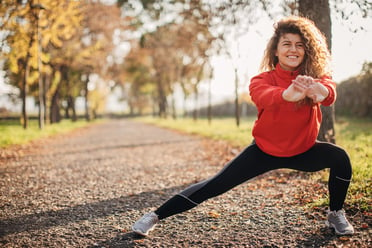 As the days grow shorter and temperatures drop, finding motivation to get to the gym can be tough. Between an increase in sickness, schedule changes, and chilly weather, it’s easy to lose your fitness rhythm. But sticking with your exercise routine during this time of year can actually help you feel better. Regular movement can boost your immunity, improve your mood, and increase your overall energy levels.
As the days grow shorter and temperatures drop, finding motivation to get to the gym can be tough. Between an increase in sickness, schedule changes, and chilly weather, it’s easy to lose your fitness rhythm. But sticking with your exercise routine during this time of year can actually help you feel better. Regular movement can boost your immunity, improve your mood, and increase your overall energy levels..jpg?width=254&height=169&name=GettyImages-1053000236%20(1).jpg) Tips for Staying Active
Tips for Staying Active
 The holidays are a time of joy, celebration, and indulgence, but they can also disrupt our daily routines. Whether you’ve been traveling, enjoying family time, or indulging in festive foods, getting back into a fitness and nutrition routine can feel daunting. If you’re ready to refocus and regain your momentum,
The holidays are a time of joy, celebration, and indulgence, but they can also disrupt our daily routines. Whether you’ve been traveling, enjoying family time, or indulging in festive foods, getting back into a fitness and nutrition routine can feel daunting. If you’re ready to refocus and regain your momentum, 
 Starting school can be exciting and overwhelming. Whether it is meeting new people, trying to manage a demanding class schedule, handling new responsibilities, or facing academic pressure, balancing everything can seem challenging. Many students also want to focus on their personal fitness goals but struggle to find time to manage with everything else going on. However, finding a balance between academics and health can be extremely beneficial for you, both physically and mentally. Here are some tips on how to manage both your academics and fitness goals.
Starting school can be exciting and overwhelming. Whether it is meeting new people, trying to manage a demanding class schedule, handling new responsibilities, or facing academic pressure, balancing everything can seem challenging. Many students also want to focus on their personal fitness goals but struggle to find time to manage with everything else going on. However, finding a balance between academics and health can be extremely beneficial for you, both physically and mentally. Here are some tips on how to manage both your academics and fitness goals. 
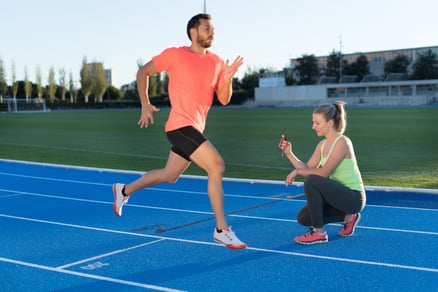 In a world where people want results in an instant and take drastic measures to achieve those results as fast as possible, developing strength, power and athleticism in a long-term aspect is often overlooked. For any fitness-related result or outcome, improvements take time. Fat loss, overall strength and/or power in any particular lift, speed, and agility are all seeds that needed to be watered for a while before noticeable and permanent changes are evident.
In a world where people want results in an instant and take drastic measures to achieve those results as fast as possible, developing strength, power and athleticism in a long-term aspect is often overlooked. For any fitness-related result or outcome, improvements take time. Fat loss, overall strength and/or power in any particular lift, speed, and agility are all seeds that needed to be watered for a while before noticeable and permanent changes are evident.
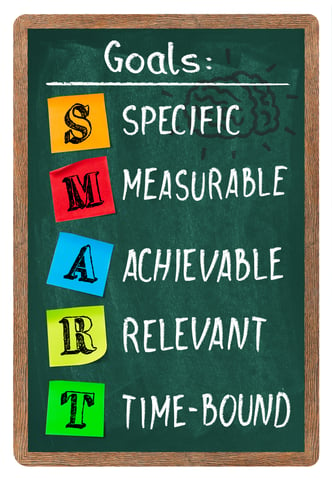 Think about some top goals you have. Maybe your top goal is to
Think about some top goals you have. Maybe your top goal is to 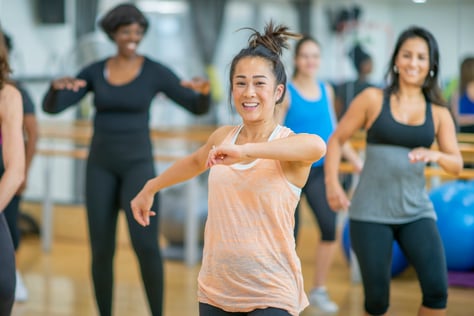 Consistency is arguably the most important component when working to accomplish goals, in or out of the gym. Without consistency, programs are unorganized, the body has a harder time adapting, and forming habits may be more challenging.
Consistency is arguably the most important component when working to accomplish goals, in or out of the gym. Without consistency, programs are unorganized, the body has a harder time adapting, and forming habits may be more challenging.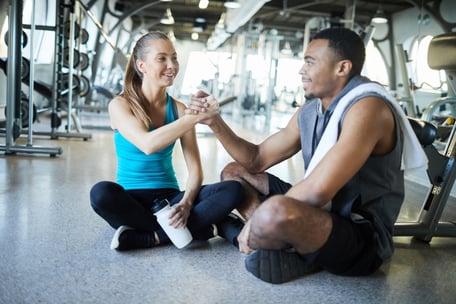 So often in life people like to look at things as win or lose. But what if you switched your perspective to thinking of making progress by winning each day? With this simple shift, your days can be filled with more positivity and success instead of the typical mindset of losing or not being good enough.
So often in life people like to look at things as win or lose. But what if you switched your perspective to thinking of making progress by winning each day? With this simple shift, your days can be filled with more positivity and success instead of the typical mindset of losing or not being good enough.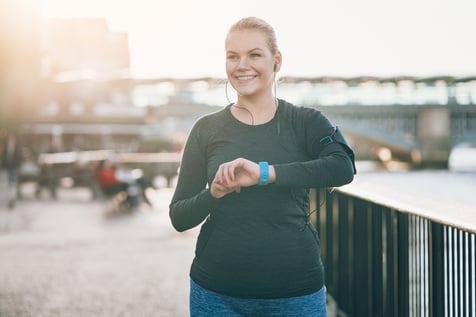 Have you ever told yourself you are going to lose weight and get fit in time for spring, only to be frustrated when warm weather rolls around?
Have you ever told yourself you are going to lose weight and get fit in time for spring, only to be frustrated when warm weather rolls around?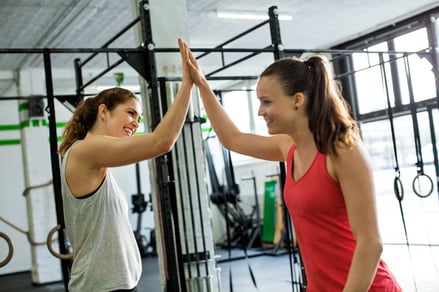 When I discuss working out and fitness with others, one question that I normally ask is, “What are your goals?” and “What does your training look like?” Most times, there will be two responses. The first is from people who are casually exercising without a plan. If you are currently this type of person, don’t get me wrong, it’s good that you are being active, but what if I told you that there is a quicker way to achieve the results that you want?
When I discuss working out and fitness with others, one question that I normally ask is, “What are your goals?” and “What does your training look like?” Most times, there will be two responses. The first is from people who are casually exercising without a plan. If you are currently this type of person, don’t get me wrong, it’s good that you are being active, but what if I told you that there is a quicker way to achieve the results that you want?